The Outside Sales Rep - While Not Extinct - Is Officially On the Endangered Species List. But Why?
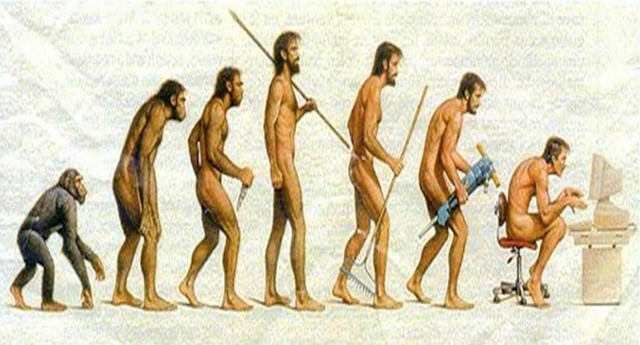
Reason #1: The Way People Buy and Sell Products and Services Has Changed
I realize I'm calling out the obvious here, but I over the past 15+ years, the way people buy and sell things has changed.
Before Google, buyers had to rely on sales reps for any of the information they wanted to get about a company. The sales person was the gatekeeper. There was no other way to get this information unless you saw advertisements, visited a company in person, or requested brochures.
After Google, all the power went into the hands of the buyer. They can now read about the company on their website. They can read reviews through platforms like G2Crowd and TrustRadius. They can directly contact a CEO or business owner via Twitter, LinkedIn, or maybe even Facebook. They can crowdsource answers to their questions in a variety of different way. So it's NOT so surprising to see that when asked about their preferred level of sales rep involvement is about less than 20% of the time.
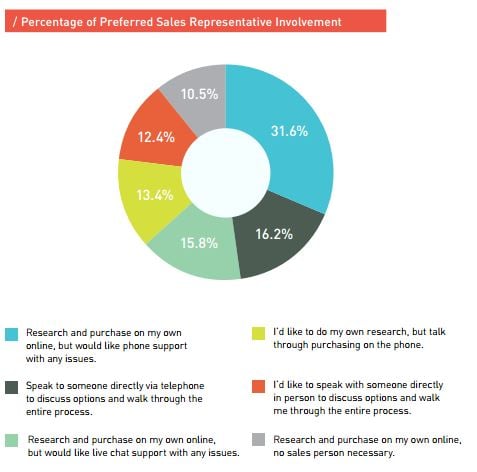 Source and Credit: Brafton; "94% of B2B buyers research online for purchase decisions" - http://www.brafton.com/news/94-percent-b2b-buyers-research-online-purchase-decisions/
Source and Credit: Brafton; "94% of B2B buyers research online for purchase decisions" - http://www.brafton.com/news/94-percent-b2b-buyers-research-online-purchase-decisions/
Reason #2: The Massive Shift to Online Research Has Created a Lower-Cost Alternative to Outbound Lead Generation
Before I worked at HubSpot, I had no idea how sales and marketing worked. So I tried everything in the OLD sales and marketing playbook:
- We purchased lists: $3,000+ per list (we bought about 3 different lists in year 1)
- We advertised: $500-$5,000+ per Ad, depending on channel, etc (we ran about 5 ads)
- We spent money on Paid Search: $1,000/ month (not including the $500/ month to have someone manage this for us)
- We went to trade shows: $5,000/ trade show minimum (not including travel expenses or cost to create the booth; we did about 6 tradeshows in year 1)
- We did "Targeted" Direct Mail Campaigns: $2,000+/ campaign (we did this about 5 of these campaigns)
- We hired a "Sales Expert" for Consulting on Strategy: $200/ hour (we had him on for about 500 hours)
Total CONSERVATIVE Cost for 1 Year of Outbound Sales and Marketing on a Small Scale: $166,000
But with INBOUND Marketing, while it does take time for a sales team to get used to working Inbound Leads and understand HOW to work Inbound Leads, we spent far less (about $10,000 for a year of the software platform and training with HubSpot... in 2011) and generated over 100 quality leads in our first month practicing Inbound Marketing.
So, while even though this data is a bit out-of-date, it's no surprise to know that Inbound Leads cost 61% less than Outbound Leads:
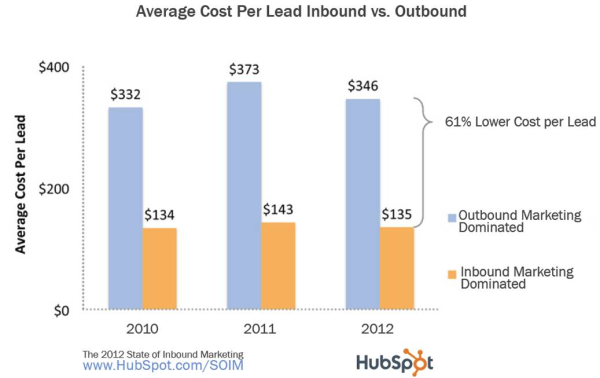
Even more importantly, Inbound is now the preferred marketing method of choice across B2B, B2C and Nonprofit organizations:
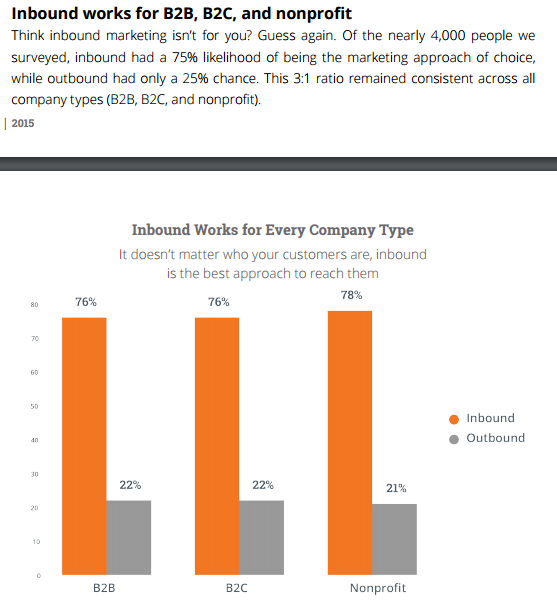
Source: State of Inbound 2015, HubSpot.
And, senior executives are the most likely to favor Inbound Marketing and Lead Generation as the growth vehicle of choice:
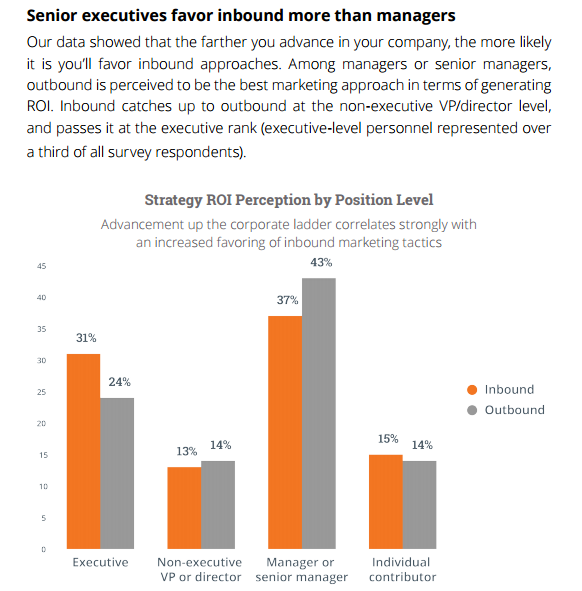
Source: State of Inbound 2015, HubSpot.
Reason #3: Videoconferencing and Collaboration Technologies Make Sales "Intimacy" Possible without Requiring Travel Time
 Companies and products like Slack, Atlassian, Box, DropBox, WebEx, GoToMeeting, UberConference,
Companies and products like Slack, Atlassian, Box, DropBox, WebEx, GoToMeeting, UberConference,
DocuSign... and many, many more... are not going away. They are only becoming more and more prelevant and more advanced over time.
With the rise of bots and Augmented Reality, I expect this "Virtualization of the Salesforce" will only continue in time, and may even lead to the borderline elimination of the traditional sales-rep as we know it.
Reason #4: Inside Sales Reps Are Just Less Expensive and Can Produce More Efficient Results
According to recent research from Harvard Business Review, an inside sales team can bring in revenue at a cost 40-90% lower than field reps. Why?
First, Inside Sales teams don't travel. You eliminate the travel and entertainment expenses, you eliminate a huge chunk of the cost.
Second, inside sales reps generally don't have as much experience as outside, or field sales reps and that's OK! And because they're less experienced, they cost less. If you read the previous three reasons why outside sales is dying, you probably noticed that web-literacy and technology adoption are key drivers to a business's success in the new era of sales.
Third, the upside of hiring younger digital natives that grew up with the web, social media, etc as "givens" and not "foreign", they are naturally going to be far more successful "meeting" prospective buyers through these methods.
The Outside Sales Reps' Final "Nail in the Coffin": Large Corporations Plan to Shift a Significant Chunk of Their Salesforce from Outside to Inside
And finally, the proof of all proof that the outside sales rep is truly on the endangered species list... large corporations are planning to shift a significant amount of their sales headcount from outside to inside in the coming years (reference chart below: "Inside Versus Outside Field Sales")
Why is this SO significant? Well, in general, large corporations don't tend to be early adopters. They tend to lag behind small and medium sized businesses anywhere from two years on the generous end, to a decade on the stingy end. But now, if 40% of of these larger businesses are planning to shift headcoutn from field sales to inside sales, the tide has truly turned.
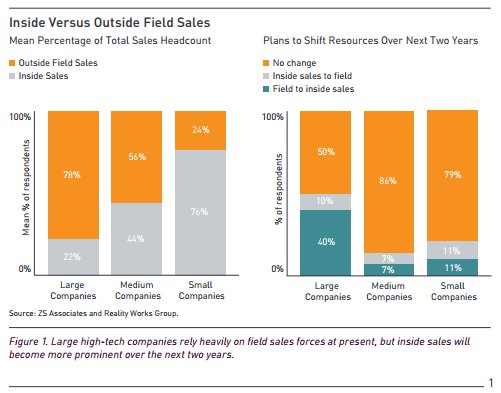
Source: Outside In: The Rise of the Inside Sales Team - http://www.zsassociates.com/publications/whitepapers/outside-in-the-rise-of-the-inside-sales-team.aspx




